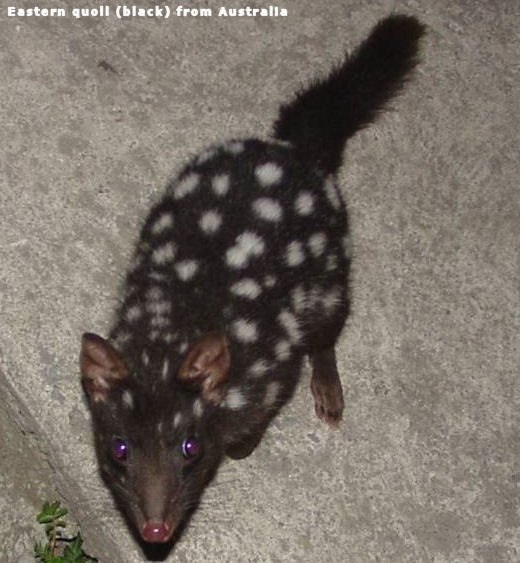
Geological and climatic events in Australia’s history have resulted in the unique species seen today, with marsupials evolving around 56 to 34 million years ago.
The main threats to macropods in Australia are habitat loss, altered fire regimes, introduced predators and now climate change. These are the main drivers of decline affecting many mammals in Australia and have resulted in this continent having the worst rate of mammal extinctions worldwide.

(extinct desert rat kangaroo)
Of 53 species of kangaroos, 29 are now threatened and 6 extinct. According to WWF, Australia's macropods, kangaroo and wallaby species will face extinction if urgent action is not taken to protect their habitat, warns WWF-Australia in the lead up to National Threatened Species Day on 7th September commemorating the death of the last Tasmanian tiger at Hobart Zoo in 1936.
However, we still read the absurd statement that governments and scientists use to support kangaroo “management”:
kangaroo populations have increased dramatically since European settlement in these areas due to the introduction of European farming methods and, for this reason, carefully controlled harvesting is required.
Historical records from settlers’ report are quite the contrary!
1788 NSW Port Jackson- “Kangaroos are very numerous here.”
1802 Barrallie “The hills were covered by kangaroos”.
1818 Oxley “flocks of kangaroos like sheep. I do not exaggerate when I say that some hundreds were seen in the vicinity of this hill.”
1820 Sutherland “A great number of kangaroos in South Australia.”
1828 Sturt “There were very many kangaroos, the intervening brush was full of kangaroos”
1836 Mitchell “During the day we saw a great number of kangaroos”
1938 Hawden “Kangaroos in great abundance”
1849 Sturt “There was no want of game of the largest kangaroos”
1882 Lyne “Kangaroos and emus! A plenty!
Historian John Auty reports that reference to historical records suggest high populations of kangaroos over much of their range. Early historical records are dotted with references to large numbers of kangaroos.
The species identified so far as at risk of climate change comprise one-third of species on the national “Endangered” list, and about one-sixth of those listed as “Vulnerable” under the Environment Protection and Biodiversity Conservation Act (Environment Australia, 2001). In other words, climate change is a threat for at least one third, and probably more, of the endangered species the Federal Government is obliged to protect.
Scientific studies in Australia identify 90 animal species at risk from climate change. These studies are far from comprehensive – the actual number is likely to be much greater. Rare species, fragmented ecosystems and areas already under pressure from pollution and deforestation are the most vulnerable.
While some Australian animals and plants are adapted to withstand dramatic seasonal changes in climate each year, many species have quite limited ranges of long-term average climate. Temperature ranges in the order of 1 – 2°C and 20 percent variation in rainfall mean that Australian animals and plants are vulnerable to long term climate change. Average temperatures on Earth have warmed by about 0.76 of a degree Celsius over the past 200 years.
Wildlife moves if possible towards preferred climate conditions for breeding, nesting, growing or feeding. With the temperature increases expected over the next 100 years, many plants and animals will need to be on the move. In the Australian Alps, kookaburras are hunting at higher altitudes than before, preying on alpine skinks that fail to recognise them as predators.
Some species that are sensitive to change will need to move away from their hotter home ecosystem southwards to where their preferred climate will exist in the future. Other species may be able to adapt to the new climate conditions at their current location and will become more dominant.
Some invasive species will be ‘winners’ from climate change. For example, feral cats are known to have caused extinctions of indigenous mammals on arid islands – but not on high rainfall ones – and hence changing rainfall patterns will most likely change the impact of cats on native mammals. Some ‘sleeper’ weeds will expand their range, and some new weeds may emerge. Some pathogens and their hosts will extend their range as temperatures increase.
We now have shooters wanting access to protected areas for “conservation shooting”, including native animals, the ongoing commercial kangaroo killing industry and burgeoning human populations justifying expansion and land clearings. Too many times we hear the “jobs” and “income” arguments to support wildlife killings and habitat destruction - this is where the buck stops! We hear too many contrary opinions!
History and cultural conditioning have animals considered a resource to plunder. Our appalling wildlife conservation record speaks for itself!

Add comment